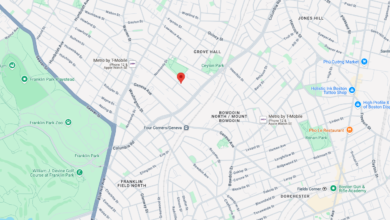PECO will hike electricity bills 10% starting in January

PECO electric and gas customers will see significant hikes in their monthly bills in January, following the state Public Utility Commission’s approval of its request for rate increases.
Electrical bills will jump 10%, or $13.58, to $149.43 per month for the typical residential customer that uses 700 kilowatt hours per month, the PUC announced Thursday. By percentage, it will be the biggest increase in PECO electric bills in at least a decade.
In 2026, bills are slated to rise an additional 1.8% or $2.70, to $152.13 per month. The exact amount each household’s bills increase will vary according to how much power they use.
In addition to delivering electricity in Philadelphia and adjoining counties, PECO also provides natural gas in the suburbs. A typical gas customer who uses 80 CCF per month will see a 12.5% hike, about $12.25 extra per month, to $110.23.
Advocates warn of shutoff risk
As is typical in a PUC rate case, PECO had proposed even greater increases — 12.3% for electric bills and 16.5% for gas bills — and, after reviewing extensive testimony from the company and many other parties, the commission granted reduced increases.
As part of the case settlement, PECO agreed to some concessions requested by consumer advocates. It will take steps to make it easier for low-income customers to get financial assistance and will discuss ways to help them further. It will also increase its contribution to a program that weatherizes low-income customers’ homes, among other measures.
Most of the organizations and companies that testified in the case ended up signing on to the agreement. However, in testimony earlier this year, an attorney for customer advocates said hiking utility bills without also substantially increasing assistance could lead to PECO shutting off power to more people.
Last year the company cut off electricity to 87,430 households for nonpayment — 6% of all customers, and 18% of its confirmed low-income residents, said Elizabeth Marx, executive director of the Pennsylvania Utility Law Project in Harrisburg.
“About one in every five low-income households in PECO’s service territory has been forced to go without [the] electric service necessary to keep warm or cool, feed their family, and keep the lights on,” Marx testified. ”Involuntary terminations have a deep and lasting impact on the health, safety, and welfare of Pennsylvania families and their surrounding communities.”
Marx declined to comment Thursday on the outcome of the PUC case.
Utility touts fewer outages, quick repairs
PECO is owned by Exelon, the nation’s biggest electric parent company, and says its annual revenues are about $2.8 billion.
Its initial electricity rate request would have boosted that figure by $464 million, but the final PUC decision reduces that bump to $354 million. It also had wanted a $111 million revenue increase from gas distribution, which was cut down to $78 million.
PECO says it needs to charge more to invest in new equipment, improve and maintain its systems, and do things like trim trees that threaten to damage power lines.
“In addition, inflation and interest rates have risen significantly, which has raised the cost of investments in the grid and led to increases in the company’s labor, contracting, and materials expenses,” PECO executive Dick Webster said in an email. “While PECO regularly implements efficiencies that improve our process and approach and help manage our operational costs, this rate adjustment is necessary to continue making these necessary investments.”
The company is working to reduce the impact of extreme weather on its infrastructure, which has reduced the number of annual power outages and allowed crews to restore power quickly when they occur, Webster said. It’s making improvements to enable more use of solar power, and is extending the duration of two incentive programs for property owners who install chargers for electric vehicles.
Union calls for higher power prices
Among those testifying in the rate case were many big power users, such as Amtrak, SEPTA, the city of Philadelphia, Walmart, and EVgo. Others who asked for modifications to PECO’s request were the state Office of Consumer Advocate and the advocacy groups Tenant Union Representative Network (TURN) and the Coalition for Affordable Utility Services and Energy Efficiency in Pennsylvania (CAUSE-PA).
The only testifying group that declined to agree to the settlement was Local 614 of the International Brotherhood of Electrical Workers, which represents 1,430 PECO employees, according to its testimony.
The union said PECO has struggled to hire enough skilled workers, and ensuring it has sufficient staff “is not an inexpensive endeavor.”
“If PECO is insufficiently funded to provide a competitive employment package, PECO will begin to face a reduction in its highly skilled workforce, all who work on critically important electric distribution systems,” IBEW said in a legal brief. “Thus, Local 614 submits that it is in the best interest of utility customers to pay more than rock-bottom prices for electric services.”
Making it a little easier to get help
The wins for consumer advocates and low-income customers include PECO’s commitment to make it easier for people to stay in its customer assistance program, or CAP, said Joline Price, an attorney at Community Legal Services in Philadelphia who helps clients fight shutoffs and get payment assistance.
The state-mandate assistance program caps people’s utility bills at set percentages of their income. They have to periodically submit paperwork showing their continued eligibility, and sometimes end up losing the discount despite still meeting the requirements, Price said.
Some of those customers have already provided their eligibility info to LIHEAP, a federally funded program that subsidizes winter heating bills. PECO will now join a data-sharing program that, with customer permission, provides their LIHEAP info to the company so they can more easily remain in CAP.
“PECO’s program could reach more customers, and one of the reasons that customers end up not enrolling is because of barriers around getting documentation and enrolling,” Price said. “We need to push for changes that make it easier to enroll in the program and stay in the program, and the LIHEAP data-sharing could really help with that.”
PECO has so far refused to automatically enroll LIHEAP recipients in CAP if they don’t already get the discount, but the company agreed to hold a “stakeholder collaborative” to discuss automatic enrollment, she said.
CAP is paid for through everybody’s rates, so expanding enrollment could increase monthly bills. But Price said that CAP participants are more likely to pay what they owe, reducing the number of unpaid bills and PECO’s collection costs.
PECO will increase the size of grants in another program, the Matching Energy Assistance Fund, from $500 to $1,250 per customer per year, she said. It will also let customers use it to make a minimum payment to keep their power on, rather than requiring them to zero out their bill.
The company is doing a few other things advocates asked for, including putting an additional $1 million into a $6.6 million program that makes low-income electric customers’ homes more energy efficient; advising customers who have electric heat that they can pay a lower residential heating rate; and ensuring it does not make low-income households pay security deposits.
PECO had asked to start charging a weather normalization adjustment, which in the winter months would lower bills when it’s unusually cold and raise them when it’s unusually hot. Consumer advocates objected, noting climate change is leading to more warmer temperatures, and the PUC rejected the request, Price said.
And yet another increase is coming
Price noted that PECO does not generate power itself, and the base rates it charges are for delivering electricity, for billing and administrative costs, and for the “return on investment” it’s allowed as a privately owned company.
The actual cost of power is determined by factors outside of PECO’s control, and can vary over time.
One of those factors is capacity prices — fees that power plants receive to ensure they can reliably provide power at times of peak demand, on the hottest and coldest days of the year.
During a capacity auction earlier this year, those prices skyrocketed. That happened due to factors like increased demand for electricity, the retirement of coal-fired power plants, the relative unreliability of natural gas-powered plants, and a shortage of more reliable renewable energy sources, such as battery storage fed by solar and wind.
As a result, in addition to the rate increases just approved, PECO customers’ electricity bills will also go up an additional 10% over two years, starting next June.
https://billypenn.com/wp-content/uploads/2024/12/2017-11-01-e-lee-philadelphia-franklin-square-peco-truck-768×512-1.webp
2024-12-13 14:03:02

 Love Philly? Sign up for the free Billy Penn daily newsletter and stay in the know
Love Philly? Sign up for the free Billy Penn daily newsletter and stay in the know Nice to see you.
Nice to see you. 


















Go to the Arqam options page to set your social accounts.